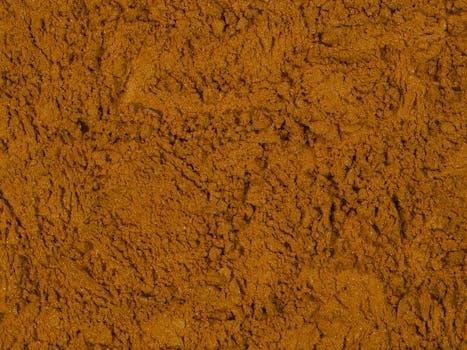The Munsell Soil Color Chart, developed with the U.S. Soil Conservation Service, is a standard tool for classifying soil colors. It is used by geologists, civil engineers, and soil scientists. The chart helps classify soil based on its hue, value, and chroma, providing a consistent method for communication.
What is the Munsell Soil Color Chart?
The Munsell Soil Color Chart is a standardized system for describing and quantifying soil color, using a set of color chips arranged in books. Developed by Albert Munsell, this chart is based on a three-dimensional color system that includes hue, value, and chroma. It is an essential tool for professionals who need to communicate soil color consistently, such as geologists, soil scientists, and archaeologists. The chart’s purpose is to provide a means for identifying and matching soil colors, which is crucial for various applications, including soil classification, environmental studies, and archaeological investigations. The Munsell system allows for a systematic comparison of soil colors across diverse geographical locations. This standardized approach ensures reliable and consistent data collection for research and practical purposes.

Components of the Munsell Color System
The Munsell Color System uses three key components⁚ hue, which is the basic color; value, which indicates lightness or darkness; and chroma, which is the color’s purity or intensity. These are used to describe soil color.
Hue
Hue, the first component of the Munsell system, refers to the basic spectral color, such as red, yellow, or blue. In the context of soil color, hue describes the dominant color family of the soil sample. The Munsell chart displays hues in a circular arrangement, with five primary hues (red, yellow, green, blue, and purple) and five intermediate hues (yellow-red, green-yellow, blue-green, purple-blue and red-purple). Each hue is further divided into ten segments, allowing for precise identification. For example, a soil may be classified as 10YR, where 10YR represents a yellow-red hue. The Munsell book has one hue per page, except for the Gley charts. Understanding hue is crucial for determining the overall color of a soil sample, as it forms the basis for further color classification.
Value
Value, the second component in the Munsell system, describes the lightness or darkness of a color. It’s a measure of how much light a color reflects, ranging from black to white. On the Munsell chart, value is represented on a vertical axis, with 0 indicating pure black and 10 representing pure white. Soil colors typically fall within a narrower range of value, from dark to light grays and browns. For instance, a soil with a value of 2 is very dark, whereas a soil with a value of 8 is very light. Value is crucial in differentiating soils that share similar hues and chromas, as it provides the degree of darkness or lightness, helping distinguish between similar colors. The value scale is illustrated for all neutral colors on the Munsell chart.
Chroma
Chroma, the third element of the Munsell color system, describes the purity or intensity of a color. It indicates how much the hue is saturated or how far it deviates from a neutral gray. Chroma values extend horizontally from the neutral axis, with 0 representing a neutral gray and higher numbers indicating more intense colors. Soil chroma typically ranges from dull to vivid, reflecting differences in mineral content and organic matter. A soil with a low chroma, such as 1 or 2, appears muted, while a soil with a high chroma, such as 6 or 8, is more vibrant. Chroma is vital for differentiating soils that have similar hues and values but different levels of color intensity. It is a component that can show the difference between a pale yellow and a rich yellow.

Practical Applications of the Munsell Soil Color Chart
The Munsell Soil Color Chart is used in diverse fields like geology, archaeology, environmental science, and agriculture. It aids in soil classification, artifact analysis, and determining land fitness for various uses.
Soil Classification and Analysis
The Munsell Soil Color Chart is fundamental in soil classification and analysis, providing a standardized way to describe soil colors. Soil color is influenced by various factors like organic matter content, mineral composition, and weathering processes. By comparing soil samples to the color chips on the chart, professionals can determine the Munsell notation for each soil, which includes hue, value, and chroma. This allows for consistent identification and categorization of soils across different regions and studies. The chart helps distinguish between different soil types, enabling scientists to understand soil properties and their formation. This classification aids in agricultural planning, environmental management, and various scientific research applications. For instance, the color can indicate the drainage capabilities and nutrient content of the soil, thereby informing land use decisions. Moreover, this standardized approach facilitates data sharing and comparison among researchers worldwide, leading to a more comprehensive understanding of soils.
Geological and Archaeological Uses
The Munsell Soil Color Chart extends its utility beyond soil science, playing a crucial role in geological and archaeological investigations. Geologically, the chart aids in identifying and classifying rock formations and mineral deposits by analyzing their color. Different geological processes create distinct colorations, which can be documented using Munsell notations. In archaeology, the chart assists in classifying artifacts based on the color of the surrounding soil, helping to understand the context of findings; This is particularly useful when artifacts are found in buried soil layers with different colors, potentially indicating different time periods or activities. The chart allows for a more precise and systematic way to analyze and record the colors of archaeological specimens. By using the Munsell system, researchers can establish detailed color profiles of soil strata and artifacts, facilitating more accurate interpretations of the past. This enhances the understanding of both geological formations and human history.
Environmental and Agricultural Applications
The Munsell Soil Color Chart is indispensable in environmental and agricultural practices. Soil color provides key insights into soil composition, which directly affects land use suitability. For instance, dark soils often indicate high organic matter content, vital for soil fertility, whereas lighter colors may suggest lower fertility or a sandy texture. This information is crucial for determining optimal crops to plant and assessing the viability of land for various uses, such as wastewater systems and wetlands. Environmental studies use the chart to monitor soil changes over time, which can reflect impacts from pollution or erosion. By assessing the color of soil, practitioners can evaluate the health and stability of ecosystems. Furthermore, the Munsell system supports consistent communication about soil conditions among professionals in agriculture, forestry, and environmental science. This ensures accurate and reliable data sharing, which aids in effective resource management and sustainable land use planning.

Using the Munsell Soil Color Chart
Using the chart involves matching soil samples to color chips, then noting the corresponding Munsell notation. This notation, consisting of hue, value, and chroma, provides a standardized description of the soil color.
Matching Soil Samples to Color Chips
The process of matching soil samples to color chips within the Munsell Soil Color Chart is a fundamental step in soil analysis. It involves a careful visual comparison between a prepared soil sample and the array of color chips available in the chart. The user selects the chip that most closely matches the color of the soil sample under consistent lighting conditions. This selection is subjective yet guided by the principles of color matching. Soil samples are typically prepared to reveal their true color, often by moistening them slightly, which enhances the color expression and reduces surface reflection. The user then holds the sample next to the chips to find a visual match. This requires careful observation and is done to ascertain the closest color match, with the chosen chip indicating the soil’s Munsell color designation; This method ensures standardization and consistency in color assessment.
Interpreting Munsell Notations
Munsell notations are a standardized way to describe soil color, using a three-part system. These notations consist of hue, value, and chroma, each representing a specific aspect of color. Hue indicates the basic spectral color such as red, yellow, or blue. Value represents the lightness or darkness of the color, ranging from black to white. Chroma signifies the purity or intensity of the color, with lower numbers representing duller colors and higher numbers representing more vivid ones. A typical Munsell notation would appear as “10YR 5/3,” where “10YR” is the hue, “5” is the value, and “3” is the chroma. Understanding these notations is crucial for accurately interpreting soil color information. The notation is not just a simple code; it’s a way to communicate complex color information precisely and consistently. These notations allow professionals to compare and analyze soil colors across different regions and studies.

Versions and Availability
Munsell Soil Color Charts have different editions and revisions. They are available both as physical books with color chips and in digital formats such as PDFs for download, often found online and from vendors.
Different Chart Editions and Revisions
The Munsell Soil Color Chart has undergone several revisions since its initial development to enhance accuracy and usability. These revisions address the need for precise color communication across various scientific disciplines. Different editions of the chart incorporate updated color standards and improved methods for matching soil samples. For instance, some charts are specifically designed for particular regions, such as the 5R soil chart used in Australia and Southeast Asia, or the 7.5 soil chart suitable for tropical soils. Over time, improvements have been made to the physical presentation of the charts, including the durability of the color chips and the organization of the color pages, making it easier for users to locate and match colors. The 2009 revised edition, for example, is a commonly used version of the Munsell Soil Color Chart. These modifications aim to ensure that the charts remain a reliable and consistent tool for soil classification and analysis. The ongoing revisions reflect the continued commitment to providing accurate and universally recognized color standards for soil science.
Where to Obtain Munsell Soil Color Charts (PDFs and Physical)
Munsell Soil Color Charts are available in both physical and digital formats to accommodate various user needs. Physical charts, often presented in a book format with color chips, can be purchased from authorized distributors like Munsell Color, a division of X-Rite, Incorporated. These charts, which include multiple color pages with different hues, are designed for hands-on soil color matching. For those seeking digital alternatives, PDF versions of the Munsell Soil Color Chart can sometimes be found online, though it’s important to ensure the source is reputable to guarantee color accuracy. Some educational institutions and research labs may also offer PDF versions for academic purposes. However, the most reliable way to acquire accurate Munsell charts is to purchase them from official sources, ensuring that you receive the latest and most precise color standards. Both physical and digital charts are useful, depending on whether you need a tangible tool for field work or a reference for electronic applications, but physical charts remain the gold standard for precise soil color classification.
Importance of Standardization
Standardization using the Munsell Soil Color Chart ensures consistent communication in soil science globally. This allows practitioners to reliably share information about soil colors with colleagues across the world.
Ensuring Consistent Communication in Soil Science
The Munsell Soil Color Chart is paramount for ensuring consistent communication within the field of soil science. This standardization is crucial because soil color provides essential information about a soil’s composition and properties. Without a uniform system, interpretations of soil color could vary widely, leading to miscommunication and errors in soil analysis. The Munsell system, with its defined parameters of hue, value, and chroma, allows scientists worldwide to share information accurately. This is particularly important for collaborative research, environmental management, and the classification of soil types. The chart’s precise color chips and numerical notations provide a common language that transcends linguistic and cultural barriers, facilitating the reliable exchange of data. This consistency is vital for making informed decisions related to agriculture, ecology, and land management, ensuring that all soil assessments are based on a shared, objective standard.